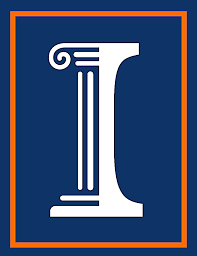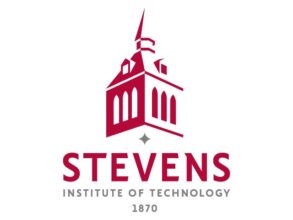25 Best Colleges for Management Information Systems – 2024
April 26, 2024

While pursuing a degree in computer science (CS) will involve a good deal of advanced mathematics and theory, information systems (IS) majors focus more on finding computer-based solutions for the business world. Information systems majors are able to remedy technical problems and oversee the collection and management of data. Additionally, IS grads learn to be excellent communicators as their future is likely to involve helping less tech-savvy people troubleshoot their technology issues and generate tech-based solutions to business challenges. Graduates of the programs on our list of the Best Colleges for Information Systems are among the most desirable candidates in the marketplace today.
Finally, note that although some of the colleges featured below do not offer a formal major in information systems, their undergraduate offerings in this subject area are so strong that they warrant inclusion on our list.
Methodology
Click here to read our methodology for the Best Colleges for Management Information Systems.
Salary Information
Want to know how much money graduates of the best MIS colleges make when they begin their careers? For each college listed (and hundreds of additional schools), you can view the starting salaries for Management Information Systems majors.
Best Colleges for Management Information Systems
Here’s a quick preview of the first ten Management Information Systems institutions that made our list. Detailed profiles and stats can be found when you scroll below:
1) Carnegie Mellon University
2) University of Pennsylvania
3) The University of Texas at Austin
4) University of Notre Dame
5) Georgetown University
6) University of Michigan
7) University of Georgia
8) University of Illinois at Urbana-Champaign
9) University of Wisconsin-Madison
10) University of Maryland
All of the schools profiled below have stellar reputations in the area of MIS and commit substantial resources to undergraduate education. For each of the best Management Information Systems colleges, College Transitions will provide you with—when available—the university’s:
We will also include a longer write-up of each college’s:
- Academic Highlights – Includes facts like student-to-faculty ratio, average class size, number of majors offered, and most popular majors.
- Professional Outcomes – Includes info on the rate of positive outcomes, companies employing alumni, and graduate school acceptances.

Carnegie Mellon University
- Pittsburgh, PA
Academic Highlights: There are a combined 80+ undergraduate majors and 90 minors available across the six schools. Impressively, particularly for a school with more graduate students than undergrads, CMU boasts a 6:1 student-to-faculty ratio and small class sizes, with 36% containing single digits. In a given school year, 800+ undergraduates conduct research through the University Research Office. The most commonly conferred degrees are in engineering (21%), computer science (16%), mathematics (12%), business (10%), and visual and performing arts (9%).
Professional Outcomes: By the end of the calendar year in which they received their diplomas, 66% of 2022 grads were employed, and 28% were continuing to graduate school. The companies that have routinely scooped up CMU grads include Google, Meta, Microsoft, Apple, Accenture, McKinsey, and Deloitte. With an average starting salary of $105,194, CMU grads outpace the average starting salary for a college grad nationally. Of those pursuing graduate education, around 20% typically enroll immediately in PhD programs.
- Enrollment: 7,509
- Cost of Attendance: $84,412
- Median SAT: 1540
- Median ACT: 35
- Acceptance Rate: 11%
- Retention Rate: 97%
- Graduation Rate: 92%

University of Pennsylvania
- Philadelphia, PA
Academic Highlights: 90 distinct degrees are available across four schools: the College of Arts & Sciences, the College of Applied Science and Engineering, the College of Nursing, and the world-renowned Wharton School. The greatest number of students pursue degrees in business (19%), social sciences (14%), biology (11%), health sciences (9%), engineering (9%), and computer science (9%). The university boasts an exceptional 26% of courses with an enrollment under ten and 59% with an enrollment under twenty as well as multiple ways for undergrads to conduct research.
Professional Outcomes: 75% of Class of 2022 grads were employed within six months of graduating, and 18% were in graduate school. Finance attracted the highest percentage of grads (30%) followed by consulting (20%), technology (15%), and healthcare (10%). Employers hiring the greatest number of 2022 grads included JPMorgan, Boston Consulting Group, McKinsey, Bain & Company, Meta, and Goldman Sachs. The median starting salary for all graduates is $80,000. For those continuing their educational journeys, the most popular move is to remain at Penn, followed by Columbia and Harvard.
- Enrollment: 9,760 (undergraduate); 13,614 (graduate)
- Cost of Attendance: $89,028
- Median SAT: 1540
- Median ACT: 35
- Acceptance Rate: 7%
- Retention Rate: 98%
- Graduation Rate: 96%

The University of Texas at Austin
- Austin, TX
Academic Highlights: UT Austin offers over 150 majors, including those at the Cockrell School of Engineering, one of the most heralded undergraduate engineering schools around, and The McCombs School of Business, which dominates in the specialty areas of accounting and marketing. The computer science department is also top-ranked. In terms of degrees conferred, engineering is tied with biology (12%) followed by communication (11%), business (11%), and the social sciences (8%). The elite Plan II Honors Program is one of the best in the country.
Professional Outcomes: Within the College of Liberal Arts, six months after graduating, 68% of Longhorns are employed and 24% have entered graduate school. The for-profit sector attracts 65% of those employed while 19% enter public sector employment and 16% pursue jobs at a nonprofit. Major corporations that employ more than 500 UT Austin grads include Google, Meta, Oracle, Microsoft, IBM, and Apple. Engineering majors took home a median income of $79k and business majors took home $70k.
- Enrollment: 41,309 (undergraduate); 11,075 (graduate)
- Cost of Attendance: $30,752-$34,174 (in-state); $61,180-$69,310 (out-of-state)
- Median SAT: 1430
- Median ACT: 32
- Acceptance Rate: 31%
- Retention Rate: 95%
- Graduation Rate: 88%

University of Notre Dame
- Notre Dame, IN
Academic Highlights: 75 majors are offered across six undergraduate colleges: the School of Architecture, the College of Arts and Letters, the Mendoza School of Business (one of the country’s best business schools), the College of Engineering, the Keough School of Global Affairs, and the College of Science. In 2022, the most degrees were conferred in business (20%), the social sciences (18%), engineering (12%), and biology (8%). A solid 60% of courses enroll fewer than 20 students, and 15% have single-digit numbers. 75% of Notre Dame undergrads study abroad.
Professional Outcomes: 69% of 2022 grads directly entered the world of employment, with the most common industries being financial services (21%), consulting (17%), technology (12%), and health services (9%). Massive numbers of alumni can be found at Deloitte, EY, PwC, IBM, Accenture, Booz Allen Hamilton, Google, Microsoft, Amazon, Goldman Sachs, JPMorgan, and McKinsey & Co. The median early-career salary was $76,000. Of the 20% of grads who went directly into their graduate/professional studies, 18% were pursuing medical degrees and 9% were studying law.
- Enrollment: 8,971 (undergraduate); 4,134 (graduate)
- Cost of Attendance: $86,125
- Median SAT: 1500
- Median ACT: 34
- Acceptance Rate: 13%
- Retention Rate: 97%
- Graduation Rate: 96%

Georgetown University
- Washington, D.C.
Academic Highlights: The student-faculty ratio is 11:1, and 60% of classes enroll fewer than 20 students. While some classes are a bit larger, only 7% cross the 50-student threshold. Those desiring to join the world of politics or diplomacy are in the right place. The Government and International Affairs programs are among the best in the country. The greatest number of degrees are conferred in the social sciences (38%) followed by business (20%), interdisciplinary studies (8%), and biology (7%).
Professional Outcomes: Within six months of graduating, 75% of members of the Class of 2022 entered the workforce, 19% went directly into a graduate or professional program of study, and 3% were still seeking employment. The Class of 2022 sent massive numbers of graduates to a number of major corporations including JPMorgan Chase (22), Citi (21), BOA (18), Morgan Stanley (16), and EY (10). Those attending grad school stay at Georgetown or flock to other elite schools like Columbia and Harvard.
- Enrollment: 7,900
- Cost of Attendance: $85,000
- Median SAT: 1500
- Median ACT: 34
- Acceptance Rate: 12%
- Retention Rate: 97%
- Graduation Rate: 96%

University of Michigan
- Ann Arbor, MI
Academic Highlights: There are 280+ undergraduate degree programs across fourteen schools and colleges, and the College of Literature, Science, and the Arts (LSA) enrolls the majority of students. The Ross School of Business offers highly rated programs in entrepreneurship, management, accounting, and finance. The College of Engineering is also one of the best in the country. By degrees conferred, engineering (15%), computer science (14%), and the social sciences (11%) are most popular. A solid 56% of classes have fewer than 20 students.
Professional Outcomes: Within three months of graduating, 89% of LSA grads are employed full-time or in graduate school, with healthcare, education, law, banking, research, nonprofit work, and consulting being the most popular sectors. Within three months, 99% of Ross grads are employed with a median salary of $90k. Top employers include Goldman Sachs, Deutsche Bank, EY, Morgan Stanley, PwC, Deloitte, and Amazon. Within six months, 96% of engineering grads are employed (average salary of $84k) or in grad school. General Motors, Ford, Google, Microsoft, Apple, and Meta employ the greatest number of alumni.
- Enrollment: 32,695 (undergraduate); 18,530 (graduate)
- Cost of Attendance: $35,450 (in-state); $76,294 (out-of-state)
- Median SAT: 1470
- Median ACT: 33
- Acceptance Rate: 18%
- Retention Rate: 97%
- Graduation Rate: 93%

University of Georgia
- Athens, GA
Academic Highlights: UGA boasts seventeen distinct colleges and schools that offer 125+ majors. Business is the most commonly conferred undergrad degree, accounting for 29% of diplomas earned. It is followed by biology (10%), social sciences (8%), communication & journalism (8%), and psychology (7%). Top-ranked programs include animal science, business, communications, and public and international affairs. 49% of sections enroll fewer than 20 students, and no matter your major, UGA encourages you to conduct research with a member of the school’s faculty.
Professional Outcomes: 96% of the Class of 2022 was employed or continuing their education six months after graduation. Popular employers include Accenture, PricewaterhouseCoopers, the Walt Disney Company, and Deloitte. Salaries vary between colleges; engineering grads had a median starting salary of $65k while journalism and communication grads reported a $50k median. In 2022, 24% of graduates enrolled directly into a graduate/professional degree program, with the most commonly attended schools including Columbia, Duke, Emory, Georgia Tech, Penn, and UVA.
- Enrollment: 30,714 (undergraduate); 9,893 (graduate)
- Cost of Attendance: $28,142 (in-state); $48,538 (out-of-state)
- Median SAT: 1310
- Median ACT: 29
- Acceptance Rate: 43%
- Retention Rate: 94%
- Graduation Rate: 88%

University of Illinois at Urbana-Champaign
- Champaign-Urbana, IL
Academic Highlights: Eight of UIUC’s fifteen schools cater to undergraduate students. There are 150 academic programs offered, including those at the acclaimed Grainger College of Engineering and Gies College of Business. In sheer volume of degrees conferred, engineering and business/marketing are tied at 19%, followed by the social sciences (9%) and psychology (6%). 39% of sections are capped at 19 students. 29% of undergraduates work with a faculty member on a research project; another 22% have some type of fieldwork, practicum, or clinical experience.
Professional Outcomes: 95% of the members of the Class of 2022 landed at their next destination within six months of graduation, with 38% matriculating directly into an advanced degree program. 57% were employed full-time; the most popular sectors were finance, consulting, healthcare, electronics, and education. Corporations landing the most recent Illini grads were KPMG, Deloitte, Epic Systems, EY, PwC, and Amazon. The average salary across all Class of 2022 majors was an extremely solid $75,000.
- Enrollment: 35,120 (undergraduate); 21,796 (graduate)
- Cost of Attendance: $35,926-$41,190 (in-state); $55,386-$63,290 (out-of-state)
- Median SAT: 1440
- Median ACT: 32
- Acceptance Rate: 79%
- Retention Rate: 93%
- Graduation Rate: 85%

University of Wisconsin – Madison
- Madison, WI
Academic Highlights: There are 230+ undergraduate majors offered across eight schools and colleges, including the top-ranked School of Business and College of Engineering as well as the College of Letters and Science, the College of Agricultural and Life Sciences, and the Schools of Nursing, Education, Pharmacy, and Human Ecology. Undergrads can expect a mix of large and small classes, with 44% of sections enrolling fewer than 20 students. Business (18%), biology (12%), the social sciences (11%), and engineering (10%) are most popular.
Professional Outcomes: In a recent year, 46% of job-seeking grads graduated with an offer. Top employers included UW-Madison, Epic, Kohl’s, Oracle, Deloitte, and UW Health. Across all graduating years, companies employing 250+ alumni include Google, Target, Microsoft, Amazon, Apple, PwC, Accenture, and Meta. 28% of recent grads enrolled directly in graduate/professional school; the majority stayed at UW–Madison while others headed to Columbia, Northwestern, and Carnegie Mellon. The university is the top producer of Peace Corps volunteers.
- Enrollment: 37,230 (undergraduate); 12,656 (graduate)
- Cost of Attendance: $28,916 (in-state); $58,912 (out-of-state)
- Median SAT: 1440
- Median ACT: 30
- Acceptance Rate: 49%
- Retention Rate: 94%
- Graduation Rate: 89%

University of Maryland, College Park
- College Park, MD
Academic Highlights: Undergraduates can select from 100+ majors across twelve colleges. 18% of degrees are conferred in computer science, followed by the social sciences (13%), with criminology, government and politics, and economics being the most popular majors. Engineering (13%), business (11%), and biology (8%) are next in line. The School of Business, the School of Engineering, and the College of Journalism are all top-ranked, as are programs in computer science and criminology. 46% of sections enroll fewer than twenty students.
Professional Outcomes: Within six months of graduating, 96% of Class of 2022 grads had positive outcomes. 67% found employment; the companies/organizations that hired the greatest number of grads included Northrop Grumman, Deloitte, Amazon, and EY. Meta, Apple, and Google employ more than 200 alumni each. The mid-50% salary range for 2022 grads was $55k-$83k. 21% of the Class of 2022 headed directly to graduate and professional school; 11% entered doctoral programs, 5% entered medical school, and 5% entered law school.
- Enrollment: 30,353 (undergraduate); 10,439 (graduate)
- Cost of Attendance: $31,540 (in-state); $60,918 (out-of-state)
- Median SAT: 1440
- Median ACT: 33
- Acceptance Rate: 84%
- Retention Rate: 95%
- Graduation Rate: 89%

University of Minnesota–Twin Cities
- Minneapolis, MN
Academic Highlights: There are 150 majors available across eight freshman-admitting undergraduate colleges. 65% of class sections enroll 29 or fewer students. The most commonly conferred degrees are in biology (13%), business & marketing (11%), engineering (10%), the social sciences (10%), computer science (9%), and psychology (8%). The College of Science and Engineering and the Carlson School of Management have strong national reputations, and the chemistry, economics, psychology, and political science departments are also well-regarded.
Professional Outcomes: The top seven companies snatching up the largest number of recent grads are all companies headquartered in the state of Minnesota: Medtronic, Target, 3M, United Health Group, US Bank, and Cargill. Google, Apple, and Meta all employ hundreds of Twin Cities alumni. The mean starting salary for recent grads was $50k. With 130 graduate programs in science, art, engineering, agriculture, medicine, and the humanities, the University of Minnesota retains many of its graduates as they pursue their next degrees.
- Enrollment: 39,248 (undergraduate); 15,707 (graduate)
- Cost of Attendance: $33,032-$35,632 (in-state); $54,446-$57,046
- Median SAT: 1370
- Median ACT: 29
- Acceptance Rate: 75%
- Retention Rate: 90%
- Graduation Rate: 84%

New York University
- New York, NY
Academic Highlights: NYU is divided into a number of smaller (but still quite large) colleges organized by discipline; in sum, there are 230 areas of undergraduate study across nine schools and colleges. For its size, a commendable 58% of classes have an enrollment under 20 students. While all schools within NYU have solid reputations, Stern holds the distinction as one of the top undergraduate business programs in the country. For those entering film, dance, drama, or other performing arts, Tisch is as prestigious a place as you can find to study.
Professional Outcomes: Within six months of exiting, 94% of Class of 2022 grads had landed at their next destination, with 78% employed and 21% in graduate school. The top industries for employment were healthcare (11%), internet and software (9%), finance (8%), and entertainment (8%). Large numbers of alumni can be found at Google, Deloitte, Morgan Stanley, Goldman Sachs, IBM, JP Morgan Chase, Citi, and Amazon. The mean starting salary is $75,336. In 2022, business, arts and sciences, and law school were the most popular grad school destinations.
- Enrollment: 29,401 (undergraduate); 29,711 (graduate)
- Cost of Attendance: $90,222-$96,172
- Median SAT: 1520
- Median ACT: 34
- Acceptance Rate: 12%
- Retention Rate: 95%
- Graduation Rate: 87%

The Ohio State University — Columbus
- Columbus, OH
Academic Highlights: There are 200+ undergraduate majors and 18 schools and colleges housed within OSU. Business sees the greatest percentage of degrees conferred at 18% followed by engineering (15%), health professions (10%), and the social sciences (9%). It makes sense that so many flock to the business and engineering schools as they are among the highest-rated undergraduate programs in their respective disciplines. 40% of sections enroll fewer than 20 students, and approximately 20% of students gain research experience.
Professional Outcomes: Upon receiving their diplomas, 56% of Class of 2022 graduates were entering the world of employment while 17% were already accepted into graduate or professional school. Hordes of Buckeyes can be found at many of the nation’s leading companies. More than 2,000 alumni work for JPMorgan Chase, more than 1,000 are employed by Amazon, and more than 600 work for Google and Microsoft. Of the grads who directly matriculate into graduate or professional school, many continue in one of OSU’s own programs.
- Enrollment: 45,728 (undergraduate); 14,318 (graduate)
- Cost of Attendance: $27,241 (in-state); $52,747 (out-of-state)
- Median SAT: 1340-1450
- Median ACT: 29-32
- Acceptance Rate: 53%
- Retention Rate: 94%
- Graduation Rate: 88%

University of Arizona
- Tucson, AZ
Academic Highlights: UArizona undergrads can choose from over 150 majors, and business/marketing (15%) is the most popular choice with more degrees conferred than any other discipline. Other common pursuits include biology (9%), health professions (9%), and engineering (7%). Majors within business, engineering, and the geosciences all have excellent national reputations. A 15:1 student-to-faculty ratio leads to a mix of class sizes with 33% of classes having an enrollment of under 20 and only 15% possessing 50 or more students.
Professional Outcomes: In recent years, some of the top employers hiring Arizona grads have been Raytheon, Vanguard, PepsiCo, Amazon, KPMG, Goldman Sachs, Intel, Lockheed Martin, Nordstrom, and Texas Instruments, and an astonishing 92% of employers rate Wildcats as coming to their first job with the skills needed to succeed. Recent College of Management grads enjoy a starting salary in excess of $60k, while College of Engineering grads have an average starting salary of $74,000. Many who go on to pursue advanced degrees ultimately do so at UArizona itself.
- Enrollment: 40,407 (undergraduate); 10,727 (graduate)
- Cost of Attendance: $35,496 (in-state); $62,896 (out-of-state)
- Median SAT: 1240
- Median ACT: 25
- Acceptance Rate: 87%
- Retention Rate: 86%
- Graduation Rate: 68%

Stevens Institute of Technology
- Hoboken, NJ
Academic Highlights: There are 35 undergraduate majors at Stevens across four undergraduate schools: the top-rated Schaefer School of Engineering & Science, the School of Business, the College of Arts and Letters, and the School of Systems and Enterprises. 49% of course sections contain fewer than 20 students. Engineering is, by far, the most common undergraduate major. Programs in computer science, cybersecurity, and quantitative finance also receive praise. Over 80% of degrees granted are in a STEM field, and most of the remaining grads major in business, finance, and accounting.
Professional Outcomes: Within six months of graduating, 97% of the Class of 2022 found employment or graduate school homes; most students entered the fields of finance (29%), technology (17%), aerospace/defense (9%), and construction (6%). The greatest number of recent grads landed at Google, EY, Merck, Prudential, and PwC. Massive numbers of alumni can also be found at Verizon, Citi, JPMorgan Chase, Pfizer, and Johnson & Johnson. The average starting salary was $79,600. Of the 33% who immediately enrolled in graduate school, the vast majority were pursuing master’s or PhDs.
- Enrollment: 4,070 (undergraduate); 5,244 (graduate)
- Cost of Attendance: $81,922
- Median SAT: 1450
- Median ACT: 33
- Acceptance Rate: 46%
- Retention Rate: 93%
- Graduation Rate: 88%

Santa Clara University
- Santa Clara, CA
Academic Highlights: Students can pursue 50 degrees offered by three undergraduate colleges: the College of Arts & Sciences, the highly respected School of Engineering, and the Leavey School of Business, which offers top-rated management information systems, accounting, and entrepreneurship degree programs. 44% of course sections contain fewer than 20 students, and undergraduate research is built into many academic programs. The most commonly conferred degrees are in business (31%), engineering (15%), and the social sciences (13%).
Professional Outcomes: Within six months of receiving their degrees, 91% of Broncos have landed jobs, started graduate school, or committed to a full-time service program. Of those employed, the most commonly entered industries are business development, engineering, education, entrepreneurship, and sales. The companies presently employing the greatest number of alumni are all tech giants including Cisco, Apple, Google, Oracle, Meta, and Adobe. The median starting salary is $67,000 with engineering majors enjoying the highest compensation ($83k).
- Enrollment: 6,115 (undergraduate); 3,063 (graduate)
- Cost of Attendance: $82,125
- Median SAT: 1390
- Median ACT: 31
- Acceptance Rate: 52%
- Retention Rate: 92%
- Graduation Rate: 89%

Florida State University
- Tallahassee, FL
Academic Highlights: A wide range of baccalaureate degrees—103 to be precise—are available at FSU. The student-to-faculty is a 17:1, which translates into somewhat larger class sizes. Ten percent of sections contain more than fifty students, and 4% have more than 100. However, that is balanced by the 66% of sections that contain fewer than twenty students. Twenty-three percent of degrees conferred fall under the business umbrella. The social sciences (15%), psychology (8%), biology (8%), and homeland security (6%) are next in popularity.
Professional Outcomes: Eighty-three percent of job-seeking Seminole grads receive at least one offer of employment within three months of graduation. The top five sectors employing 2022 grads are (in order) finance, technology, marketing, health, and engineering. Roughly one-third of 2022 Florida State grads elected to immediately pursue admission into an advanced degree program; 75% of those who apply receive at least one acceptance. A typical graduating class sees over 100 students accepted into medical schools and over 200 accepted into law schools.
- Enrollment: 32,936
- Cost of Attendance: $25,762 (In-State); $39,692 (Out-of-State)
- Median SAT: 1300
- Median ACT: 29
- Acceptance Rate: 25%
- Retention Rate: 94%
- Graduation Rate: 85%

Pennsylvania State University — University Park
- State College, PA
Academic Highlights: Penn State offers 275 majors and a number of top-ranked programs in a host of disciplines. The College of Engineering is rated exceptionally well on a national scale and is also the most popular field of study, accounting for 15% of the degrees conferred. The Smeal College of Business is equally well-regarded, earning high rankings in everything from supply chain management to accounting to marketing. It attracts 15% of total degree-seekers. 61% of classes have an enrollment below thirty students.
Professional Outcomes: By graduation, 70% of Nittany Lions have found their next employment or graduate school home. 98% of College of Business grads are successful within three months of exiting, flocking in large numbers to stellar finance, accounting, consulting, and technology firms. Hundreds of alumni work at Citi, Salesforce, and Meta, and more than 500 currently work at each of IBM, Deloitte, PwC, Amazon, EY, JPMorgan Chase, Microsoft, Google, and Oracle. 75% of 2022 grads employed full-time earned starting salaries greater than $50k.
- Enrollment: 41,745 (undergraduate); 7,020 (graduate)
- Cost of Attendance: $32,656 (in-state); $52,610 (out-of-state)
- Median SAT: 1300
- Median ACT: 29
- Acceptance Rate: 55%
- Retention Rate: 91%
- Graduation Rate: 85%

Indiana University
- Bloomington, IL
Academic Highlights: IU offers 200+ majors. The university’s 18:1 student-to-faculty ratio is not bad for a school of Indiana’s size, and it does make an effort to keep undergraduate classes on the small side. While there are a number of introductory courses that transpire in giant lecture halls, 37% of all sections contain no more than 19 students. Business/marketing is the most popular major accounting for 30% of the total degrees conferred and biology is second at 9%. IU’s computer science degree program is the school’s third most frequently conferred degree at 8%.
Professional Outcomes: Class of 2022 grads reached their next employment or graduate school destination at a 94% rate within six months of receiving their degrees. The median starting salary for A&S grads was $41,000. In the Kelley School of Business, 97% were placed successfully within six months, and the median starting salary was $67,000. Among the most frequently attended graduate schools by recent grads are Indiana Bloomington (including its own law and medical schools), Purdue, Loyola Chicago, Northwestern, and Columbia.
- Enrollment: 35,660
- Cost of Attendance: $25,170 (In-State); $53,860 (Out-of-State)
- Median SAT: 1280
- Median ACT: 30
- Acceptance Rate: 82%
- Retention Rate: 91%
- Graduation Rate: 81%

Texas A&M University — College Station
- College Station, TX
Academic Highlights: With nineteen schools and colleges and 130+ undergraduate degree programs, Texas A&M is a massive operation. As the name implies, there is a heavy emphasis on agriculture, engineering, and business, which all place well in national rankings and garner deep respect from major corporations and graduate/professional schools. Class sizes trend large, but 24% of courses enroll fewer than 20 students and personal connections with professors are entirely possible, particularly through the research-oriented LAUNCH program.
Professional Outcomes: On graduation day, 54% of students had already received at least one job offer and 22% were heading to graduate/professional school. Many Aggies go on to work at major oil, tech, and consulting firms; more than 500 are employed at each of ExxonMobil, Halliburton, Chevron, EY, Amazon, Microsoft, Intel, Accenture, and PWC. Starting salaries were strong—on average, College of Engineering grads made $80k and College of Agriculture & Life Sciences grads netted $54k. A&M is also the eighth-largest producer of law students in the entire country.
- Enrollment: 57,512 (undergraduate); 16,502 (graduate)
- Cost of Attendance: $31,058 (in-state); $59,336 (out-of-state)
- Median SAT: 1270
- Median ACT: 28
- Acceptance Rate: 63%
- Retention Rate: 95%
- Graduation Rate: 84%

University of Alabama
- Tuscaloosa, AL
Academic Highlights: Approximately half of all courses at the University of Alabama contain fewer than 20 students and 17% contain 50 or more; the student-to-faculty ratio is 19:1. The greatest number of undergraduates study business (29%), while other popular majors include engineering (11%), journalism (9%), and the social sciences (9%). The engineering, nursing, accounting, marketing, and economics programs have stellar reputations with prospective employers.
Professional Outcomes: Within six months of graduating, 92% of alumni have already achieved a positive result; 58% go into the working world and one-third enter graduate/professional school. Top employers include Epic. Lockheed Martin, AT&T, Northrop Grumman, EY, and Dell. The average salary for a Class of 2022 grad was $54,290. For grad school, the highest number of students stay at Alabama while many others enroll at Vanderbilt, FSU, and the University of South Carolina.
- Enrollment: 32,458
- Cost of Attendance: $26,740 (In-State); $48,040 (Out-of-State)
- Median SAT: 1210
- Median ACT: 26
- Acceptance Rate: 80%
- Retention Rate: 87%
- Graduation Rate: 73%

University of Delaware
- Newark, DE
Academic Highlights: The University of Delaware offers 150 bachelor’s degree programs. Nearly one-third of students pursue a degree in either business (21%) or engineering (9%), two of the school’s highest-ranked departments. Nursing is popular, with 11% of degrees conferred being in the health professions. Other frequently pursued majors include the social sciences (10%), biology (7%), and education (5%). 62% of courses enroll fewer than 30 students. The university also has the oldest study abroad program in the nation, with 30% of undergrads participating.
Professional Outcomes: 94% of Class of 2022 grads quickly found their next destination. 66% were employed, with 74% taking jobs at for-profit companies, 16% at nonprofits, 7% in K-12 education, and 4% with a government entity. The greatest number of newly minted alums were hired by JPMorgan Chase & Co., KPMG, EY, ChristianaCare, and Deloitte. The median starting salary for this cohort was $62,000. 28% immediately pursued an advanced degree, with 62% entering master’s programs, 20% entering a professional program, and 9% beginning a PhD.
- Enrollment: 18,066 (undergraduate); 4,557 (graduate)
- Cost of Attendance: $33,718 (undergraduate); $57,358 (graduate)
- Median SAT: 1280
- Median ACT: 29
- Acceptance Rate: 72%
- Retention Rate: 91%
- Graduation Rate: 82%

University of Houston
- Houston, TX
Academic Highlights: Nearly 100 undergraduate majors are offered across 11 different colleges. Programs within the College of Business and College of Engineering are particularly strong, especially petroleum engineering, entrepreneurship, and marketing. The most degrees are conferred in business/management/marketing (28%), psychology (7%), computer science (7%), engineering (7%), biological sciences (7%), and social sciences (6%). 34% of classes enroll fewer than 20 students, and
Professional Outcomes: By graduation day, 29% of recent grads had already accepted a full-time position and 11% had been accepted to graduate school. For those who entered the workforce, top employers were Houston ISD (as well as several other school systems), JPMorgan Chase, Houston Methodist, and Walgreens. Of those continuing their education, the highest percentage stayed at the University of Houston followed by the University of Texas, Baylor College of Medicine, Texas A&M, Texas Woman’s University, and Rice.
- Enrollment: 37,946 (undergraduate); 8,730 (graduate)
- Cost of Attendance: $24,268 (in-state); $39,868 (out-of-state)
- Median SAT: 1230
- Median ACT: 25
- Acceptance Rate: 70%
- Retention Rate: 87%
- Graduation Rate: 65%

University of Oklahoma
- Norman, OK
Academic Highlights: In total, OU offers 170 academic programs, 80 of which are housed within the OU Health Sciences Center. With a very reasonable student-to-faculty ratio of 16:1, the University of Oklahoma is able to run 47% of its course sections with an enrollment of 19 or less. Business (26%) is by far the most commonly conferred degree, followed by engineering (13%), agriculture (9%), biology (8%), and psychology (5%).
Professional Outcomes: The top hiring employers in 2022 were Paycom, Deloitte, KPMG, Dell, AT&T, Boeing, Amazon, and Norman Public Schools. These connections are enhanced by the fact that 38% of recent grads reported completing an experiential learning opportunity during their undergraduate years. Large numbers of alumni are now pursuing an advanced degree at SMU, NYU, Oklahoma State, the University of Tulsa, and the University of Oklahoma College of Law.
- Enrollment: 21,294
- Cost of Attendance: $29,553 (In-State); $46,633 (Out-of-State)
- Median SAT: 1130
- Median ACT: 23
- Acceptance Rate: 73%
- Retention Rate: 84%
- Graduation Rate: 65%

Drexel University
- Philadelphia, PA
Academic Highlights: There are 80+ undergraduate majors to choose from at Drexel and they offer a reasonable 9:1 student-to-faculty ratio with commensurately reasonable class sizes. Fifty-two percent of sections contain 19 or fewer students, and just a sliver under 9% of sections contain fifty or more. Looking at the number of degrees conferred by discipline, the big three at Drexel are business (25%), health professions (21%), and engineering (17%). Visual and performing arts (9%), and CS (8%) round out the list of majors with a sizable representation.
Professional Outcomes: One year after graduating, 97%, Dragons have arrived at their next destination; 81% were employed, and 13% had matriculated into graduate or professional school. The largest employers of Drexel alumni are Comcast, Merck, Vanguard, and Johnson & Johnson. The average starting salary for Drexel grads with a full-time job was $64,774. Drexel’s medical school acceptance rate was 60%, roughly 20 points higher than the national average. It offers an accelerated BS/MD program with its own Drexel University College of Medicine.
- Enrollment: 13,881
- Cost of Attendance: $81,508
- Median SAT: 1330
- Median ACT: 29
- Acceptance Rate: 80%
- Retention Rate: 87%
- Graduation Rate: 78%
We hope you have found our list of the Best Colleges for Management Information Systems to be useful and informative as you continue your college search process. We also invite you to check out some of our other resources and tools including:
- AP Score Calculators
- SAT Score Calculator
- ACT Score Calculator
- Best Summer Programs
- College List Building Tool

